From OEM to Brand Building: How to Launch Your Own Paddle Board Line in 2025 (Part2)
May 10, 2025
Leave a message
In Part 1 of this series, we explored why 2025 is the ideal year to launch your own paddle board brand, how to identify the right market niche, and how to choose a reliable OEM manufacturer in China. But finding your supplier is just the beginning.
Now it's time to shape your vision into a real, sellable product.
In Part 2, we'll walk you through the creative and strategic steps that turn a generic OEM board into a branded product that speaks to your target audience. You'll learn how to:
Customize your paddle board design and add market-driven features,
Build a strong brand identity through logo, packaging, and storytelling,
Understand the production process and ensure quality control from your factory partner.
Whether you're a wholesaler, distributor, or launching your own DTC brand, these steps are critical for creating paddle boards that not only perform well-but sell well, too.
Let's dive in.
Step 3: Develop Your Own Paddle Board Design and Features
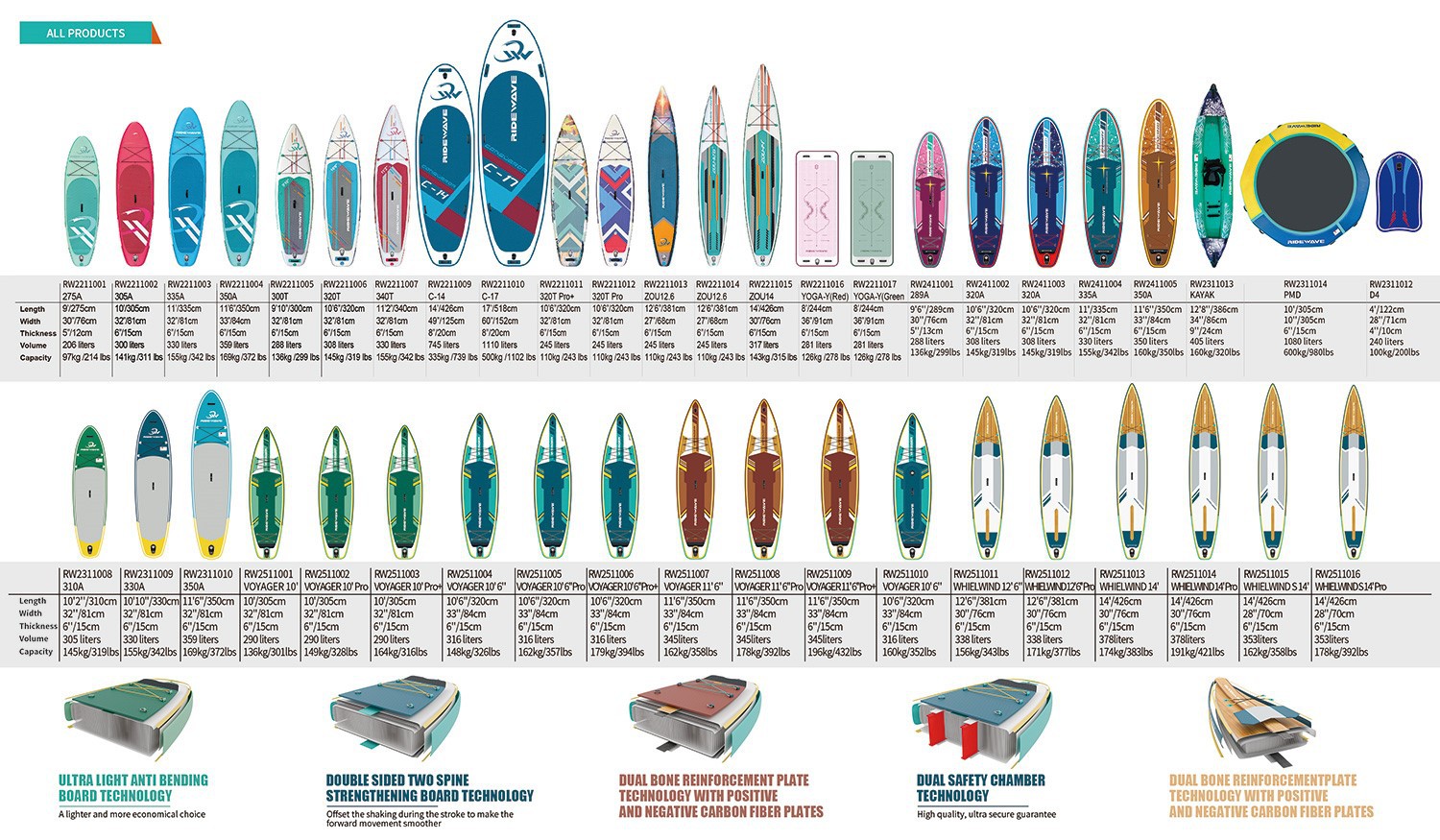
1. Choose the Right Paddle Board Shape and Size
Your board's shape determines performance, so base it on your niche market:
All-around SUPs (10'6", 32"): Best-selling for beginners, family, and casual use
Touring SUPs (11'–12'6", narrower widths): Popular in Europe for long-distance lake and river paddling
Surf SUPs (under 9'6"): Ideal for Australian brands targeting beach and wave riders
Yoga SUPs (33"–35" wide): For wellness-focused customers, often in resort settings
Racing SUPs (12'6"+, narrow): For performance-oriented markets
🎯 RIDEWAVE can advise on the top-selling dimensions per region and support new brand owners with ready-to-customize templates.
2. Pick the Right Construction Paddle Board Technology
Your customers care about weight, durability, and stiffness. Common inflatable SUP construction types include:
Single-layer PVC: Light and cost-effective, good for price-sensitive markets
Double-layer PVC (manual or fusion): Stronger, stiffer, more premium feel
Woven drop-stitch + carbon side rails: High-performance construction for pros and racers
Choose construction that matches your brand promise-whether that's affordable fun or elite performance.
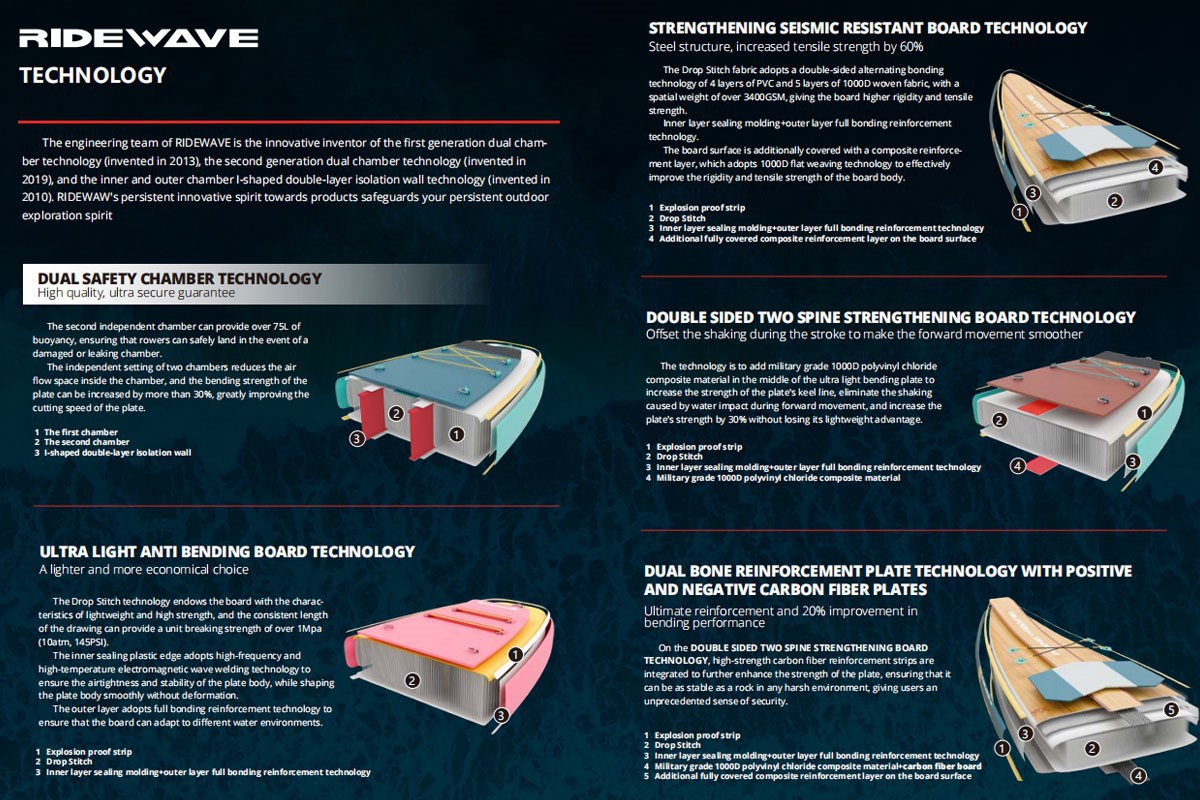
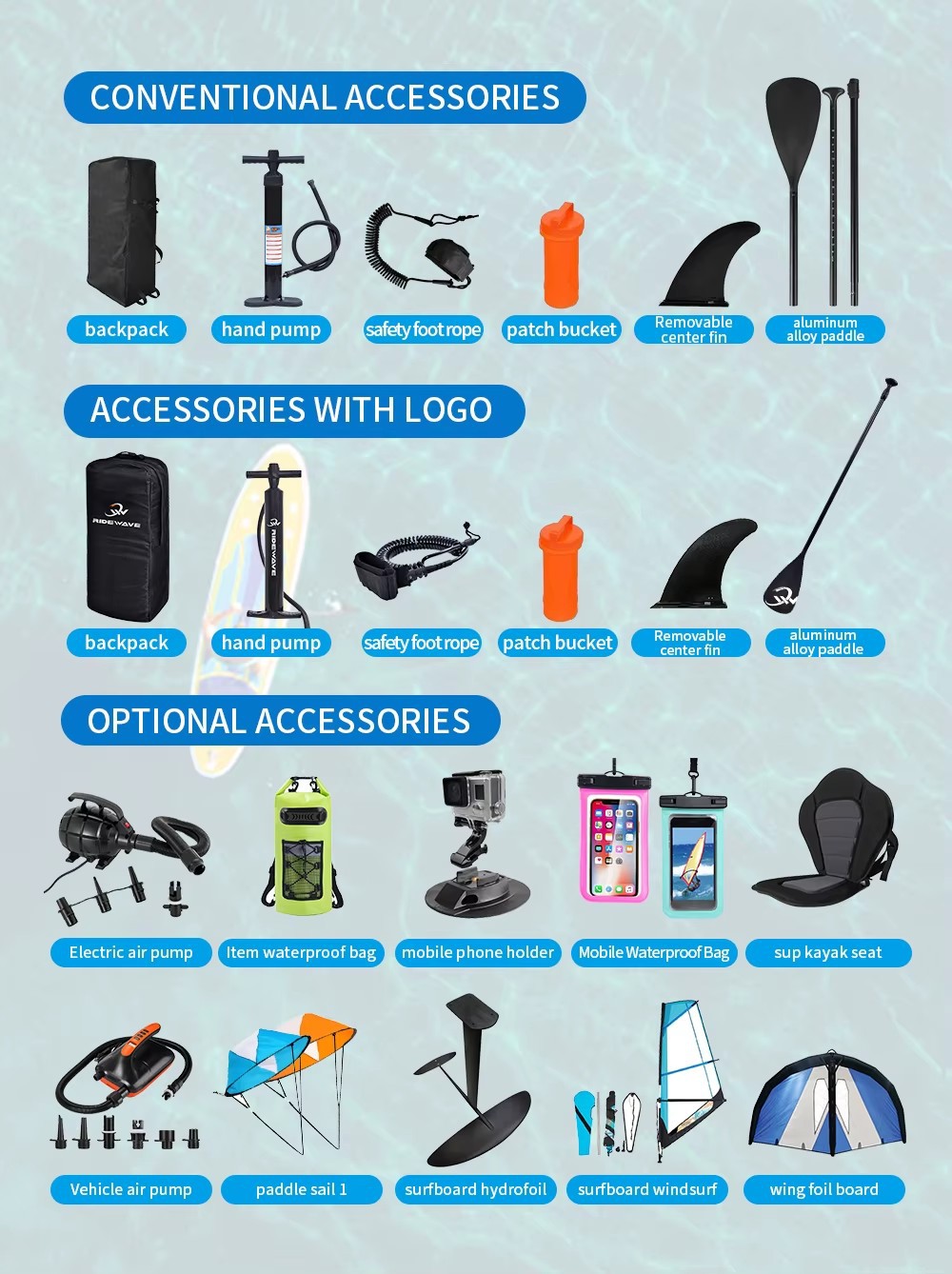
3. Paddle Board Design Custom Features and Accessories
Adding the right functional details will boost perceived value:
EVA deck pad: Choose textures and colors (crocodile skin, diamond groove)
Bungee cords: Front, rear, or both for storage flexibility
Camera mounts / D-rings: Add-ons for adventure seekers or yoga straps
Inflation valves & fin systems: Choose US fin boxes or snap-in systems for easy use
Custom paddle, leash, pump, and backpack: Consistent branding across accessories
🔧 RIDEWAVE supports full accessory customization-from printing your logo on paddles to designing eco-friendly packaging.
4. Paddle Board Visual Design – Make It Eye-Catching
Your board's graphic design should reflect your brand personality. Consider:
Bold, colorful designs for younger or lifestyle-focused markets
Minimal, elegant lines for premium or eco-friendly brands
Regional cultural elements for local appeal (e.g. Russian art motifs, Australian wildlife themes)
RIDEWAVE offers in-house design assistance, or we can work with your designer to prepare print-ready files (in AI or PDF format).
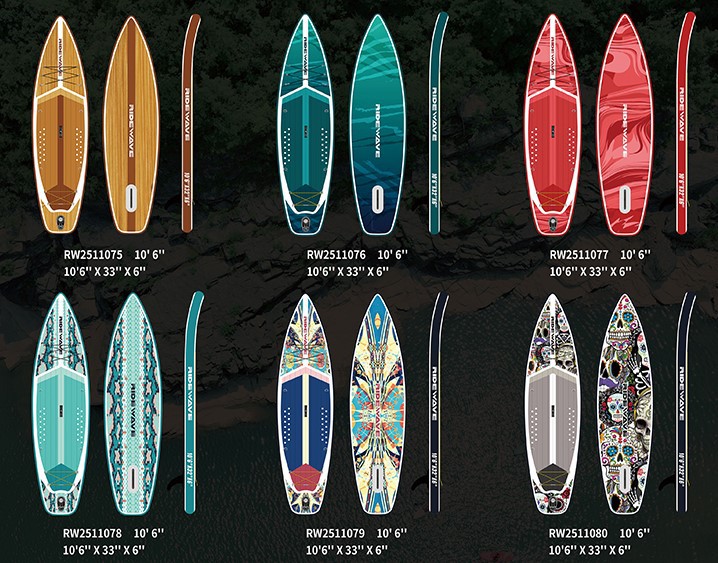
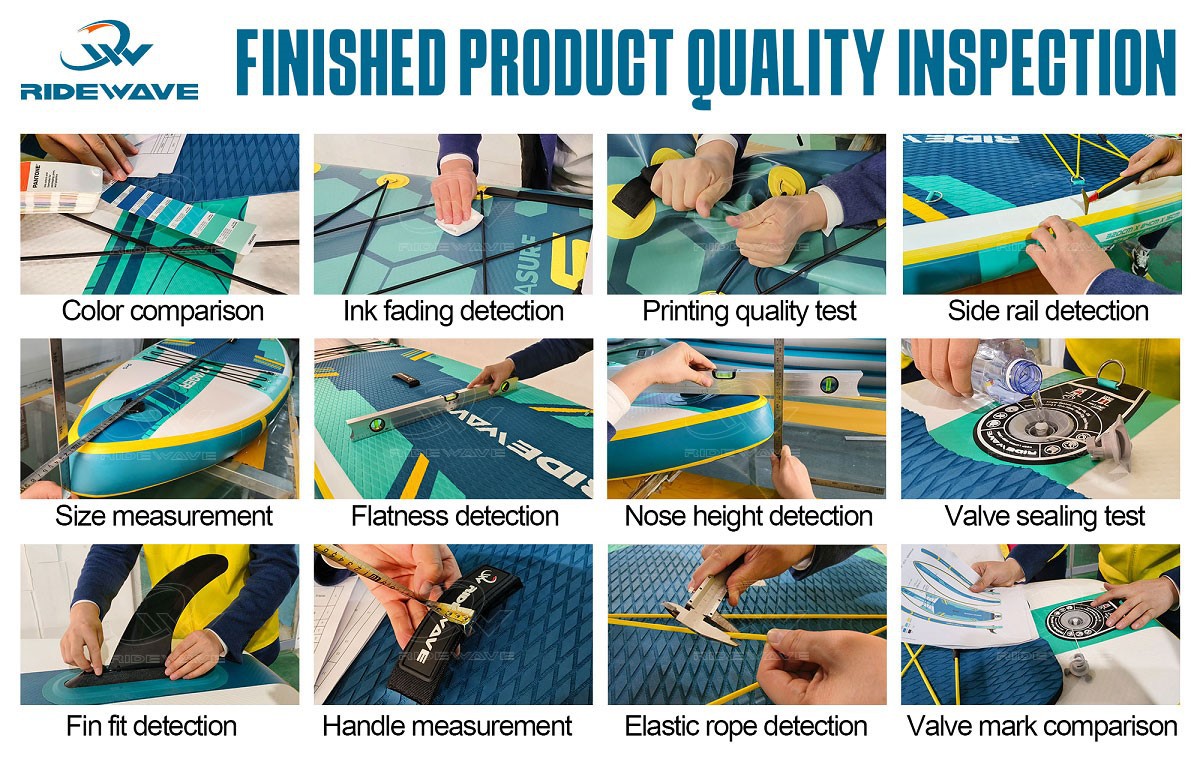
5. Paddle Board Test and Optimize Before Mass Production
Before full production, always test your prototype:
Does it feel stable and stiff enough on water?
Are accessories durable and easy to use?
Is your logo placement clean and visible?
Do colors and print details match your brand guide?
Collect early feedback from distributors or local testers-then optimize before scaling up.
📦 At RIDEWAVE, we provide sample production and small batch orders, helping new brands minimize risk and refine their designs.
Step 4: Paddle Board Branding Essentials – Logo, Packaging, and Storytelling
Paddle Board Brand Building
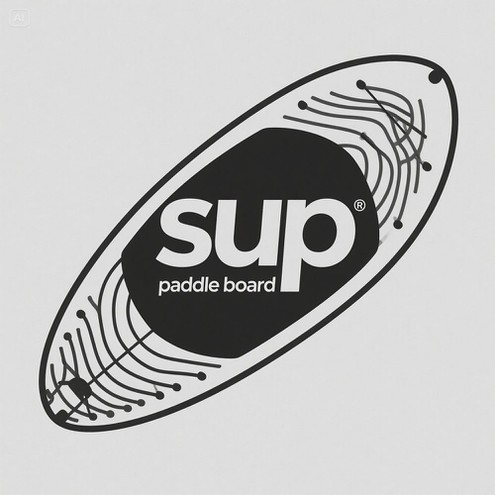
1. Create a Professional Logo that Speaks Your Brand
Reflect your target market (youthful, eco, adventurous, luxury, etc.)
Work well on all surfaces: board, paddle, backpack, website, catalog
Be vector-based for easy printing (AI, EPS, PDF)
Stay readable in both full color and monochrome
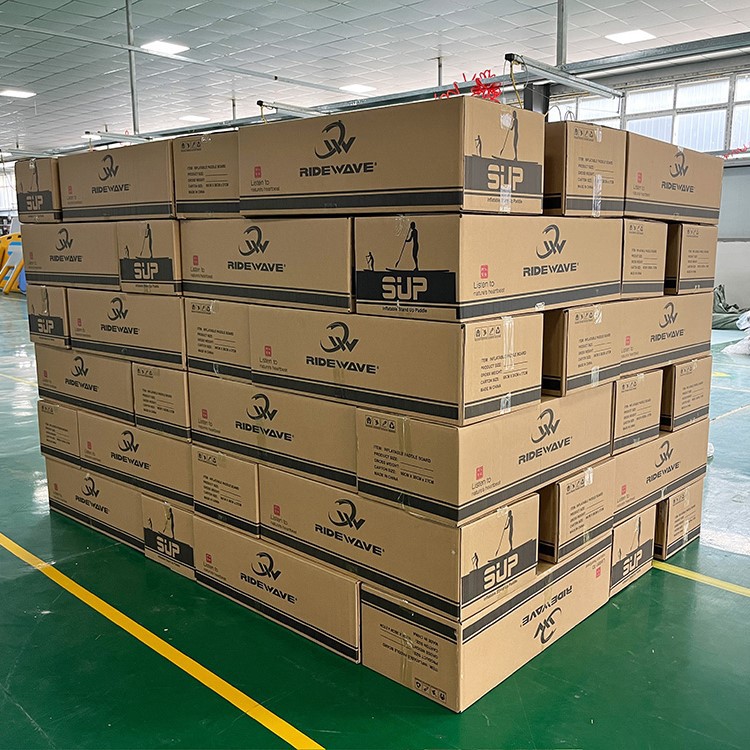
2. Design Packaging That Adds Value
Packaging matters-especially for retail display, Amazon sales, and first impressions with distributors. Don't just use a plain box. Consider:
Full-color printed cartons with your logo and product photos
Custom-designed backpacks or trolleys with embroidered or silk-screen branding
Printed user manuals with setup instructions, safety tips, and warranty
Eco-friendly packaging for sustainable branding
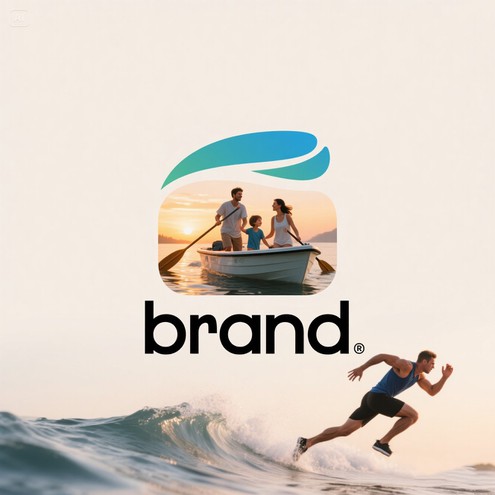
3. Develop a Strong Brand Story
Modern customers don't just buy products-they buy into a story. Your brand narrative can help distributors and end customers emotionally connect with your paddle boards. A good brand story usually includes:
Why you started the brand (passion for SUP, travel, wellness, etc.)
What makes your boards unique (materials, community, purpose)
Who it's for (adventurers, families, athletes, eco-conscious users)
Your brand values (freedom, sustainability, innovation…)
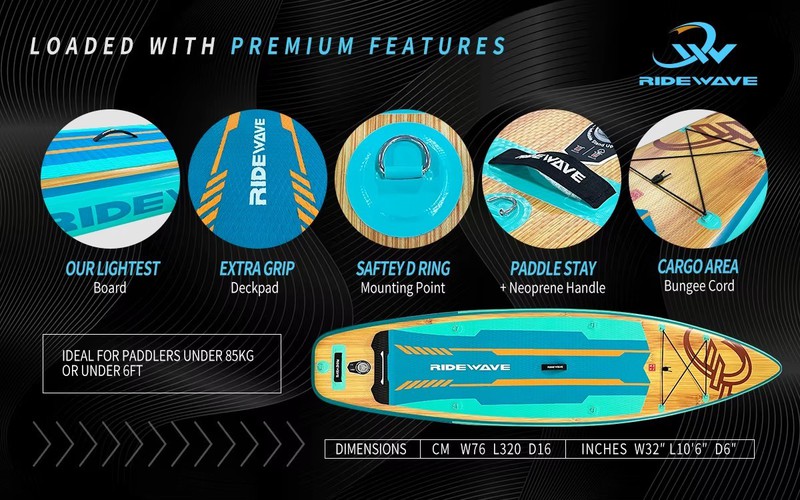
How to Ensure Visual Consistency Across All Touchpoints for Your Paddle Board Brand
To build trust in your brand, your visual identity must stay consistent:
Use the same logo size and placement across products
Stick to a defined color palette and font set
Create a brand style guide for your team or marketing partners
Align product photos, social media, and packaging with your identity
RIDEWAVE can help you build a brand asset library (including PSD mockups and photography templates) that matches your board and accessories.
Register Your Paddle Board Brand: An Optional Yet Smart Step
If you're planning to scale, register your brand name and logo in:
Your home country (EU IPO, UK IPO, IP Australia, or Rospatent in Russia)
Key e-commerce platforms (like Amazon Brand Registry)
Optionally, in China for IP protection during manufacturing
This step protects your investment and avoids copycats or name conflicts.
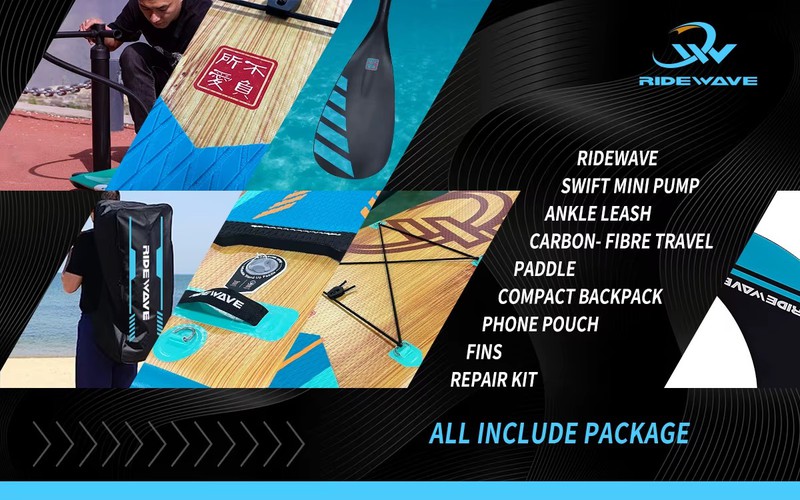
Step 5: Paddle Board Quality Control – What to Expect from the Factory
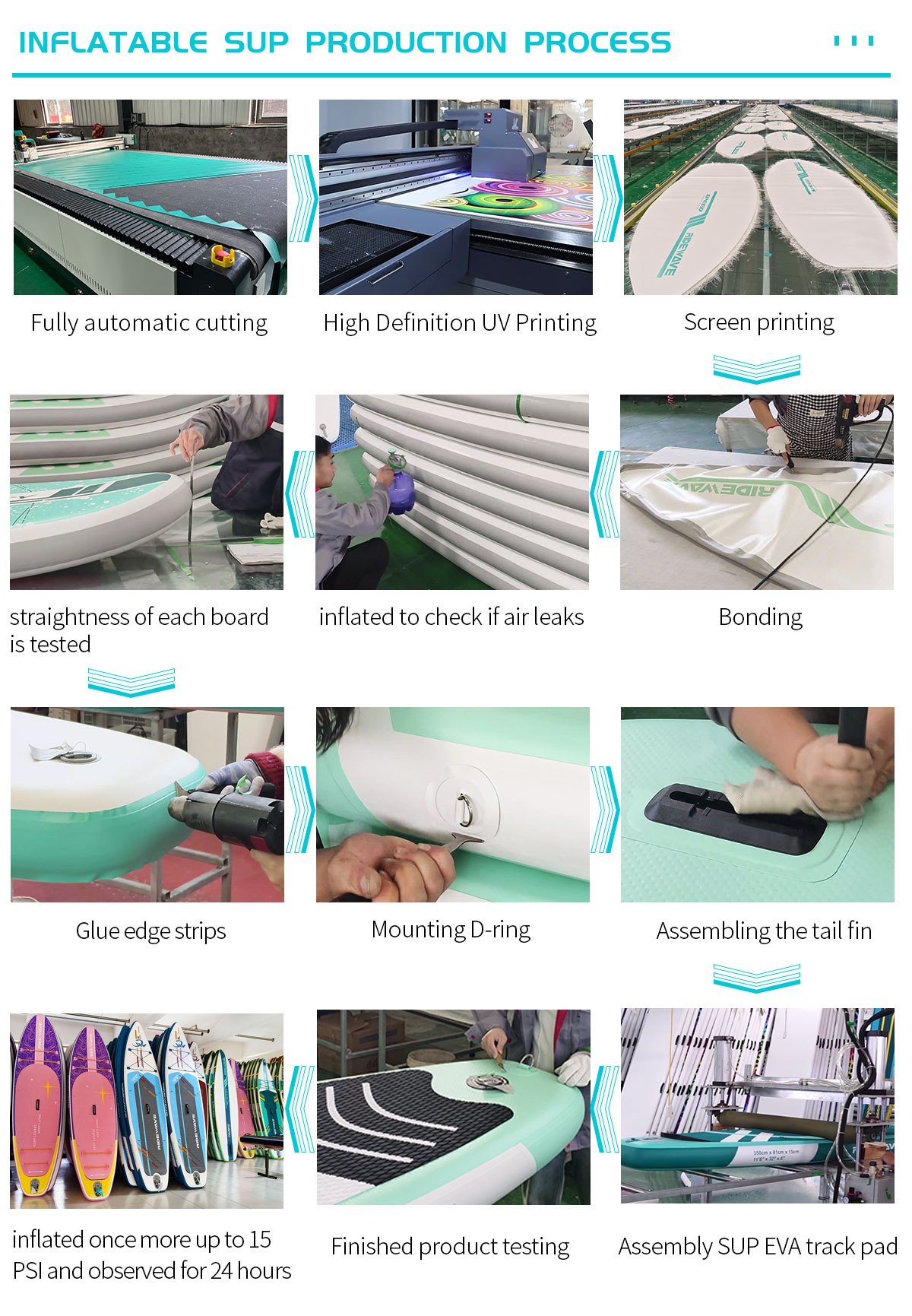
1. Understand the Paddle Board Production Process
Here's a simplified breakdown of how inflatable SUP boards are manufactured in a good OEM factory:
Material Cutting – PVC fabric and drop-stitch cores are cut using CNC precision
Printing & Lamination – Your custom design and logos are printed and heat-laminated
Assembly – Panels are glued or welded together, and EVA pads, handles, fins, valves are installed
Inflation Testing – Every board is inflated to full PSI (usually 15–20) and left for 48 hours to detect leaks
Cleaning & Packing – Boards are cleaned, inspected, and packed with all accessories
⚙️ RIDEWAVE provides real-time photo/video updates during production for full transparency.
2. Set Clear Production Expectations Before Starting Your Paddle Board Order
To avoid delays or surprises, confirm the following before placing your bulk order:
MOQ (Minimum Order Quantity) – Standard is 50–100 units, but RIDEWAVE offers flexible MOQs for new brands
Lead Time – Usually 25–40 days depending on season and order volume
Materials & Components – Confirm what PVC, drop-stitch, EVA foam, valves, and accessories will be used
Print File Format – Make sure your designs are in AI or PDF with all fonts outlined
Labeling – Decide if you want barcode stickers, QR codes, serial numbers, etc.
📋 At RIDEWAVE, we issue a clear order sheet with all specifications before production begins-ensuring you stay in control.
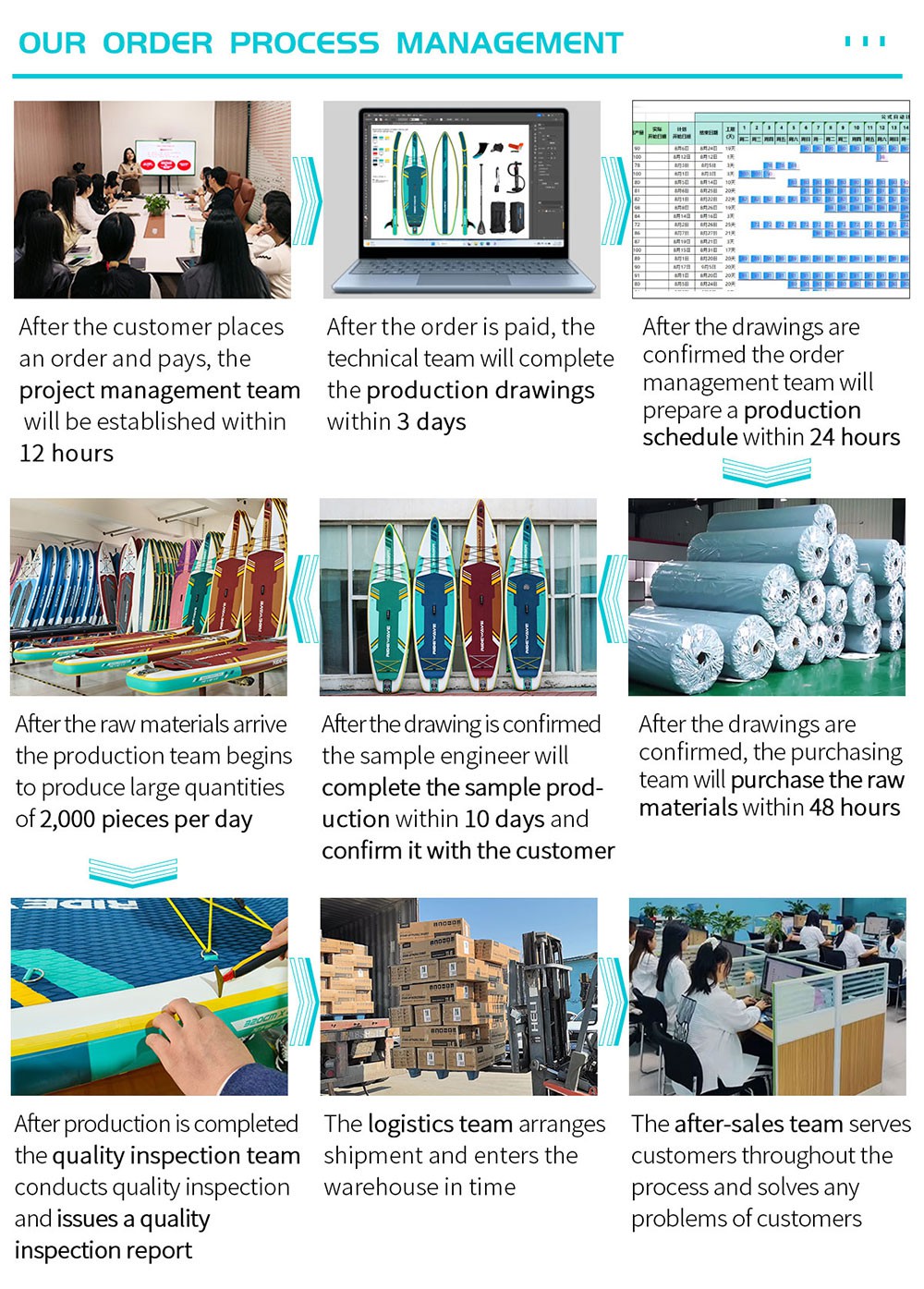
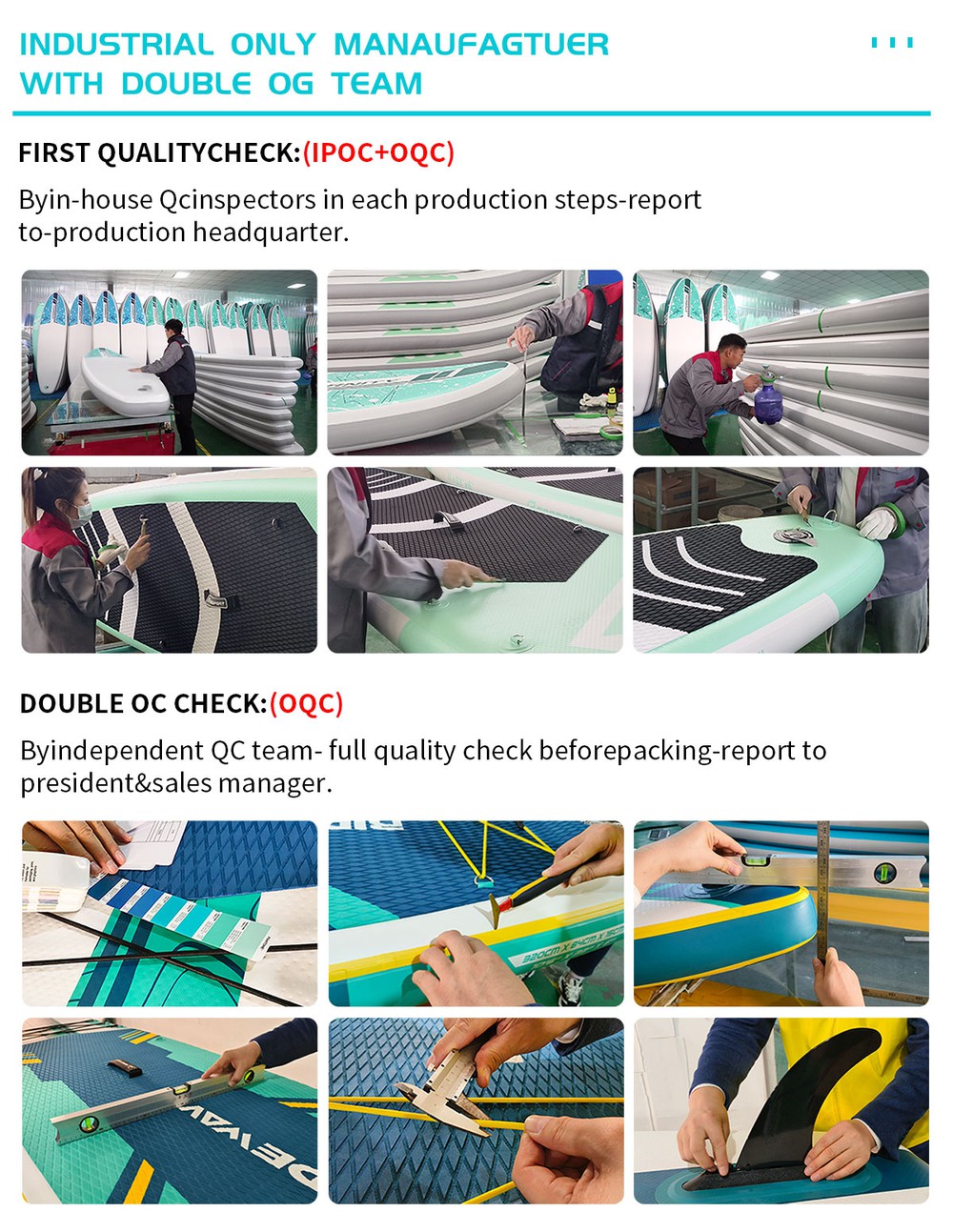
3. Paddle Board Quality Control – What Checks Should Be Done
High-quality paddle boards require multiple QC checkpoints. You or your supplier should cover:
✅ Raw material inspection
✅ Pre-assembly check (print quality, EVA alignment, parts)
✅ Inflation test (48 hours at full pressure)
✅ Final surface check (air leaks, glue marks, dirt, logo clarity)
✅ Accessory testing (zippers, straps, pumps, paddles, etc.)
If you're not onsite, ask for detailed QC reports with photos or videos.
🔍 RIDEWAVE's in-house QC team follows strict protocols and shares reports with every shipment. We also welcome third-party inspections (SGS, TÜV, etc.)
4. Paddle Board Sampling & Pre-Shipment Inspection
Before mass production, it's smart to order a pre-production sample to:
Verify design accuracy
Test product quality in your local water conditions
Show your distributors or test with influencers
Make last-minute tweaks before the bulk order
Once production is done, you or a trusted QC agent should conduct a pre-shipment inspection to verify quality, quantity, and packaging.
📦 RIDEWAVE offers fast sample production (7–10 days) and free sample revisions if issues are caused on our side.
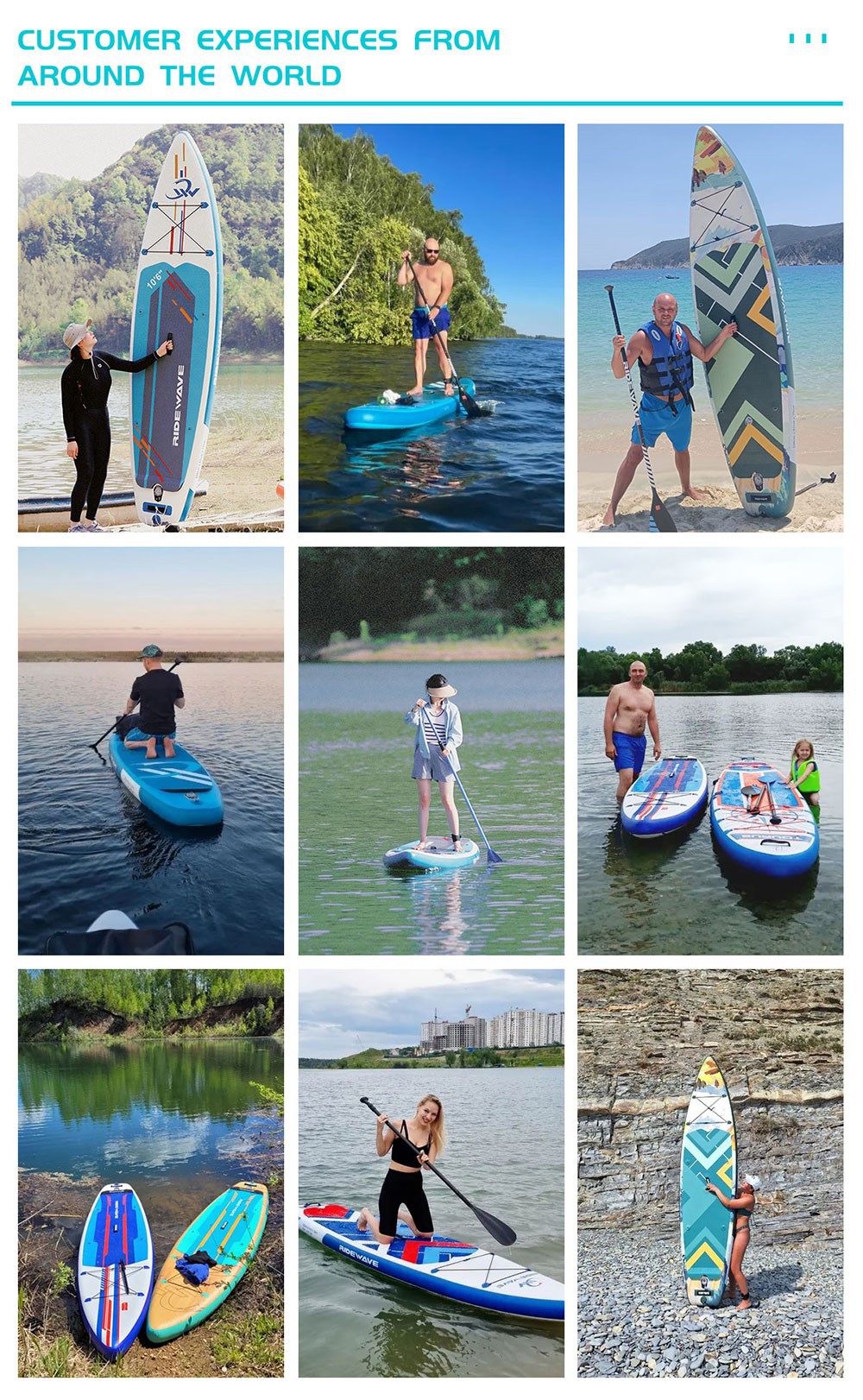
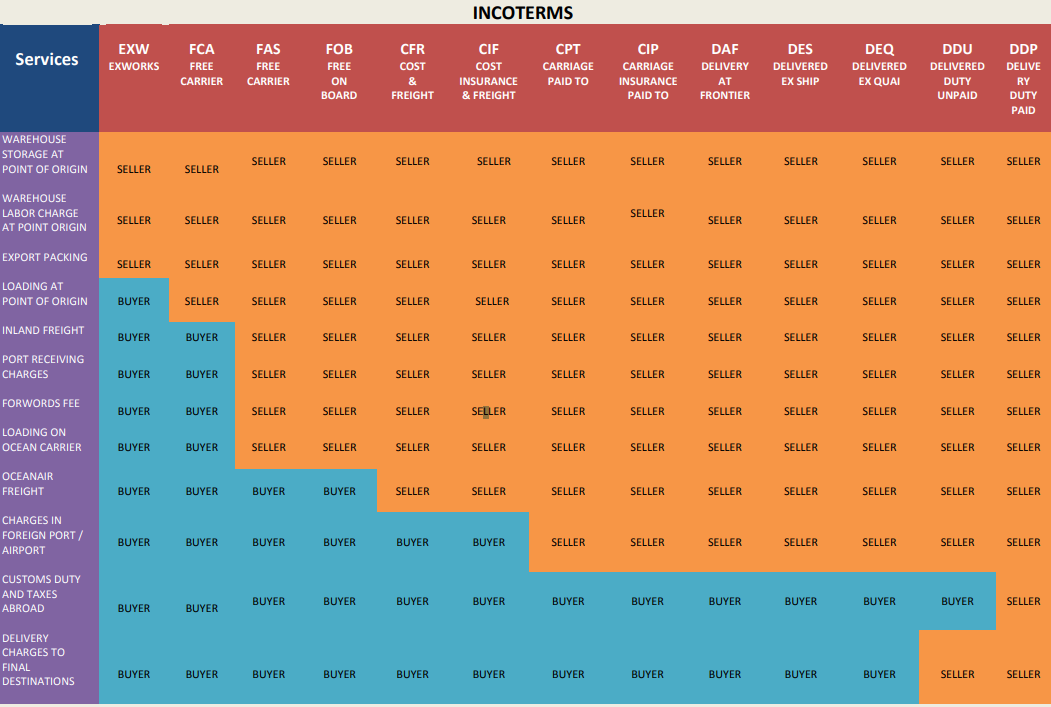
5. Smooth Paddle Board Launch Starts with Smart Logistics Planning
After QC, your boards need to be shipped efficiently. Options include:
Sea freight (FCL or LCL) – Best for large B2B orders; takes 20–40 days
Rail freight – Faster than sea for Europe (10–18 days via China–Europe train)
Air freight – Expensive, but fast for urgent samples or small launches
RIDEWAVE can assist with EXW, FOB, or DDP delivery terms, helping you find the best balance of cost and time.
You've Paddle Board brand Built It-Now Let's Sell It: Preview of Part 3
Bringing your paddle board vision to life-from choosing the right design to ensuring production quality-is a major milestone. But even the best product won't succeed without smart market entry strategies.
In Part 3 of this series, we'll guide you through the next phase:
how to launch your paddle board brand into the market. You'll learn how to price your products, find the right sales channels (online and offline), approach distributors and retailers, and run marketing campaigns that attract loyal customers-especially in competitive markets like Europe, Australia, and Russia.
👉 Stay tuned for Part 3: "From OEM to Brand Building – How to Launch Your Own Paddle Board Line in 2025" – where we turn your finished product into a market success.
|
Final Section: Related Articles You May Like
|
| Each post explores the challenges and best practices B2B buyers face in a specific area-don't miss them! |

